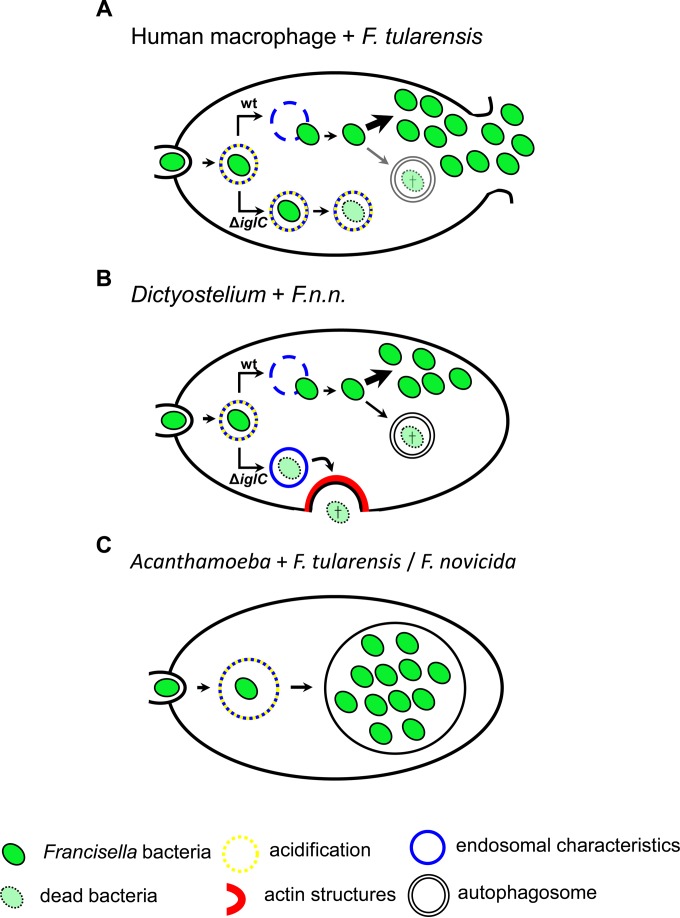FIG 5.
Comparison of Francisella infections in human, Dictyostelium, and an environmental amoeba. (A and B) Macrophages (A) and Dictyostelium (B) phagocytose Francisella bacteria, forming a phagosomal compartment with endosomal characteristics. With acidification of this compartment, Francisella wt bacteria escape the phagosome into the cytosol early in infection. Avirulent mutant bacteria (ΔiglC) remain within the phagosome (which is reneutralized in Dictyostelium) but are either attenuated in growth (macrophages) or exocytosed (Dictyostelium). In both host cells, Francisella replicates in the cytosol, and a small proportion of bacteria are targeted by autophagy. (C) In Acanthamoeba, a potential environmental host, the course of Francisella infection is very different. After phagocytosis, Francisella resides in a spacious vacuole showing endosomal properties and acidification. In contrast to macrophages and Dictyostelium, Francisella subsequently does not escape its compartment but replicates inside the vacuole. Intriguingly, cells infected with F. novicida show cyst formation. F.n.n., F. noatunensis subsp. noatunensis.

